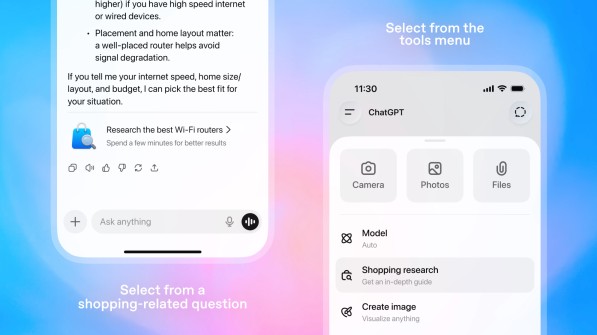MAP Pricing vs. MSRP: What's the Difference?
Learn the key differences between MAP pricing and MSRP, and discover how they impact your business strategy. Gain insights into effective pricing strategies.
If you work in ecommerce, you’re probably looking for ways to balance and control your “MAP” and “MSRP” pricing. These two pricing strategies are easy to confuse or misunderstand. MAP and MSRP are distinct, but they should work in tandem to support and protect your brand as you sell on online marketplaces. So what are MAP and MSRP and why do they matter? Here’s what you should know:
What is a MAP price?
MAP (or minimum advertised price) is the minimum price a manufacturer or wholesaler allows resellers and retailers to charge for their products without consequence from the manufacturer. Brands will set a MAP policy, a clear guideline for third-party sellers, to ensure their products are not undervalued or sold below cost. MAP policies are only legitimate if:
- MAP prices are unilaterally set by the brand without input from your retailers, distributors, or resellers
- The brand clearly sets forth what steps they can take against MAP policy violators
- MAP prices apply equally to all resellers and are enforced equally with all resellers
How to create a MAP policy
By continuing to buy and sell your products, your resellers agree to abide by your MAP policy. When setting a MAP policy strategy, many brands consider the following:
- Set a low enough MAP price that it discourages resellers from heavily discounting your products
- Set a MAP price that accurately reflects the brand image and value you want to reflect
Brands should also consider the consequences of pricing that is too low. If you focus solely on revenue and not enough on profitability, you could find that retailers and online sellers race to compete on price. This will drive your price lower and lower, leading to what we call the “profitability death spiral.” Your MAP price should lead to profitability and growth.
The benefits of a minimum advertised price
MAP allows you to control your brand identity and promote consumer trust of your product and brand. Here are some of the benefits of having MAP policies:
- Better brand protection and control
- Creates a level playing field for retailers
- Reduces bad customer experiences
- Protects the profitability and margin of your products
How to enforce MAP pricing
MAP policies should be structured to help brands avoid violating antitrust laws. For this reason, you should work with your legal team to implement and enforce your MAP policy. One way brands can effectively enforce MAP is by simply monitoring online product prices across digital channels to identify fluctuations in the market and identifying resellers that are violating your policy.
At Pattern, we provide you with the data you need to identify price fluctuations and identify MAP policy violators. Once Pattern’s software helps you find the MAP violators, you and your legal partners can enforce your policy. If you need help creating or enforcing a MAP policy, we’ll connect you with the industry’s best partners.
Watch the video to learn more about creating your MAP policy.
What is a manufacturer's suggested retail price (MSRP)?
MSRP (or manufacturer’s suggested retail price) can help brands standardize pricing across their resale channel and determine fair prices for their products.
Here is the key difference between MSRP and MAP pricing:
- MSRP is a suggested price set by the brand, and it’s a recommendation for retailers and resellers
- MAP is an enforceable policy that brands can use to ensure resellers can’t price their products below a certain threshold
MSRP doesn’t necessarily have to be the final price of a product—it’s most often a starting price. It is often determined by taking into account all of the costs associated with the distribution and manufacturing process for a product and the margin amount resellers need in order to make a profit. MSRP also establishes value. For example, if a brand wants to build a premium or luxury reputation, the MSRP can reflect the actual or perceived value of their product.
The benefits of MSRP
Setting up an MSRP for your product offers the following benefits:
- Maintains brand equity
- Establishes brand and product value
- Standardizes costs across marketplaces
- Protects the profitability of products
MAP vs. MSRP: Can brands enforce these prices?
Like MAP pricing, MSRP has to be set up as a one-way recommendation and not an agreement between a brand and a retailer or reseller. But unlike MAP pricing, MSRP is just a recommendation, not a contractual bind. MSRP is not enforceable.
How do MAP and MSRP work together?
MAP and MSRP have different applications that may prove useful in different scenarios. For example, MAP policies are typically more useful in marketplaces where competition is fierce and price erosion happens easily. MAP policies are very helpful for controlling unauthorized sellers and gaining control over your brand’s reputation.
MAP and MSRP work together to:
- Serve the interests of your brand
- Support your resale channels
- Protect your authorized resellers and retailers
A MAP policy provides a price floor for your product, standardizes your lowest end pricing, and gives legitimate resellers a fair playing field. Setting an MSRP establishes value for your product and lets your resellers know you’re serious about controlling channel conflict, maintaining pricing equity, and protecting profitability margins. It gives retailers confidence setting pricing at the MSRP level. MAP combined with MSRP creates a stronger level of brand protection, giving your brand more sustainable, profitable growth.
Maintain MAP and MSRP pricing with Pattern
MAP policies can be tricky to draft, because there are so many legal lines to tiptoe around and so much nuance that goes into pricing. They can also be tricky to enforce without the right tools. At Pattern, we have the tools and data to enable you to confidently create and implement a pricing policy that will lead to brand control on all your online marketplaces. Pattern can help you identify MAP policy violations, allowing you to regain control of your brand online so that your image and your resellers are protected.
Get in touch to learn how we can help you set and maintain pricing policies.


.jpg)





.jpg)

